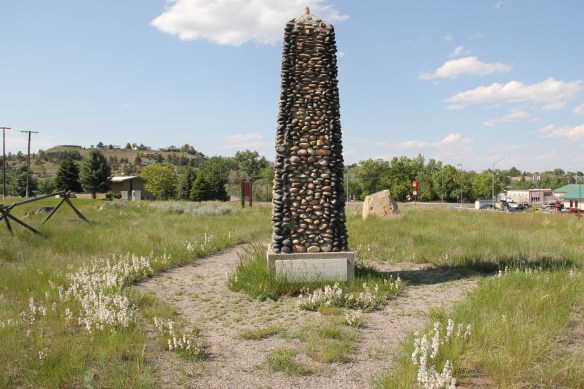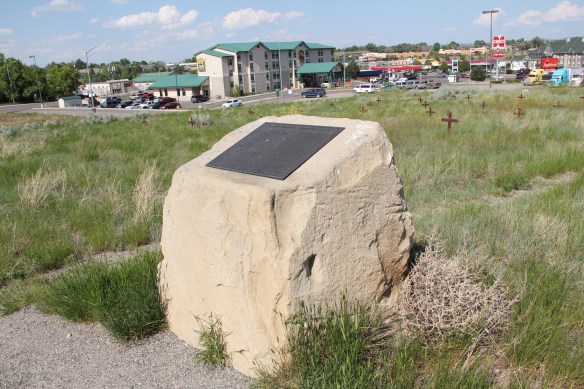For 90 years, Billings residents have marked and told the stories of its first cemetery–that of the short-lived Yellowstone River settlement of Coulson (c. 1877)–and of those early pioneers buried on the southern rimrocks overlooking the valley. This early effort of preservation and interpretation was led by leading Billings civic capitalist, I. D. O’Donnell, himself one of the first settlers of the region. He led the creation of both the monument
to Luther “Yellowstone” Kelly (a project that now is getting a major renovation) and the monument to the Coulson, or “Foothill,” Cemetery.


In the 1920s, after his retirement as the chief of irrigation for the U.S. Bureau of Reclamation, O’Donnell took up a greater interest in local history. He interviewed many of his fellow early citizens, creating the collection Montana Monographs that you can still read at the Parmly Billings Library, and taking steps to restore the forgotten Coulson cemetery and Kelly gravesite.

The obelisk monument made of river rock became the city’s initial historic site–or historic spot as the monument stated–and it fed right into the romance of the west as portrayed in movies, popular fiction, and radio: the image of “Foothill,” where men died
with their boots on, from gun fights or other stereotypical frontier violence. The reality was far different–most, such as Ellen Alderson, the wife of early merchant and hotel operator John Alderson, died from diseases, accidents, and not violence.

In the last 30 years, the sprawl of the modern city to the east has surrounded what was once a quiet, even forlorn space. Efforts from the city to provide improved parking and walkways in recent years are positive improvements at the cemetery.
The historic driving tours of Billings always include a stop, or at least a mention, of the Kelly grave and Boothill Cemetery. But on the eastern side of town, along Central Avenue, is just as important of a historic cemetery, the Mountview Cemetery–which expanded c. 1920 out of the earlier Billings Cemetery, established during the town’s initial settlement in 1882.
Many visitors appreciate the beauty and landscaping at Mountview Cemetery but it seems that few consider it to be a historic site. But to my mind, it is certainly the most significant historic cemetery in Billings for here lie the graves–many understated to be sure–of a group of civic capitalists who built not only Billings but led the development of the Yellowstone Valley in the late 19th and early 20th centuries.
O’Donnell (d. 1948) is buried here as is his grand collaborator in the early 1900s Preston B. Moss (d. 1947)–their homes still stand next to each other in downtown Billings as does the home of Henry W. Rowley, the engineer who came with the Minnesota and Montana Land Company to build the Big Ditch in 1882 and who stayed to work with his colleagues to build the city. A. L. Babcock was not tight, let’s say, with O’Donnell, Moss, and Rowley, who brought the Billings Sugar Company into existence in the first decade of the 20th century, but Babcock was a Republican political leader and major investor in his own right, as downtown landmarks attest.
In the earlier Billings Cemetery you find the Civil War veterans markers for Alonzo Young, whose Young’s Point was an early Yellowstone River landmark (now approximately the location of Park City) and the previously mentioned John Alderson, who ran the National Hotel, the two-story log building that put Coulson “on the map” back in 1878. The contributions of Young and Alderson, buried here side by side, are forgotten today–which is truly unfortunate.
The defined family plots, either by property cast-iron Victorian fences or by low stone walls, are a key architectural feature of the earlier cemetery, as well as some of region’s famous stone carved Odd Fellows grave markers, such as that for the Bundys, located just beyond the grave of early settler Thomas McGirl.

This brief overview does not do justice to the city’s historic cemeteries. Certainly I gave Boothill consideration in the 1984-1985 and even wrote about it in both of my books on Billings history. But Mountview is a historic landscape that only now I recognize–and I hope to do more exploration in the future.






















